With one click
Export a perfectly formatted traditional script.
Hollywood, Bollywood, Nollywood … in the 21st century, movies are made everywhere. And while the film industry expands, so does our desire to hear from more diverse voices, including languages we may not understand. But with strict screenplay formatting, how do you write in a foreign language to enhance the authenticity of your story, and at the same time make it legible and not confusing? Never fear, there are a few simple ways to write foreign language dialogue in your script, no translations needed.
Export a perfectly formatted traditional script.


If it’s not important for the audience to understand the dialogue spoken by a character (perhaps it’s just setting the tone for the scene), or, despite not speaking that language, the audience will still understand what’s going on, then you can write that dialogue in the spoken language. This is only recommended for writing in a foreign language in very small bits of dialogue. For example:
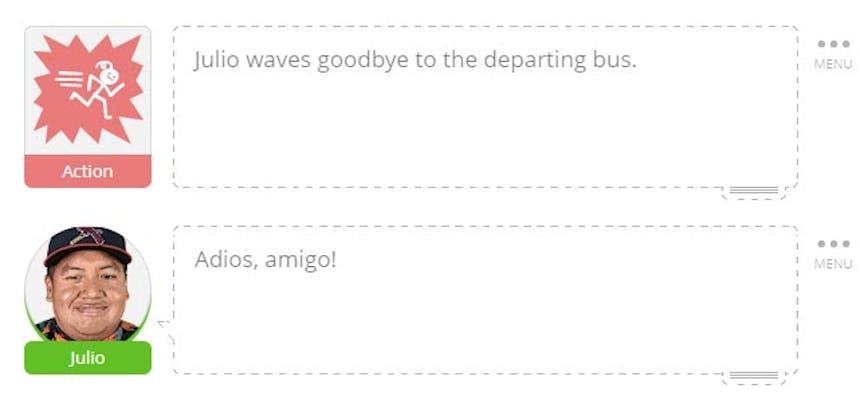
In a traditional screenplay, or upon exporting your SoCreate story to the traditional format, the dialogue would look like this:
Julio waves goodbye to the departing bus.
Adios, amigo!
Or, you can write the foreign dialogue in your given language, but use Dialogue Direction to let the reader know which language that line is meant to be delivered in.
After writing the dialogue in your given language, click the Dialogue Direction icon at the bottom of the Dialogue Stream item. It looks like a person with an arrow pointing right.
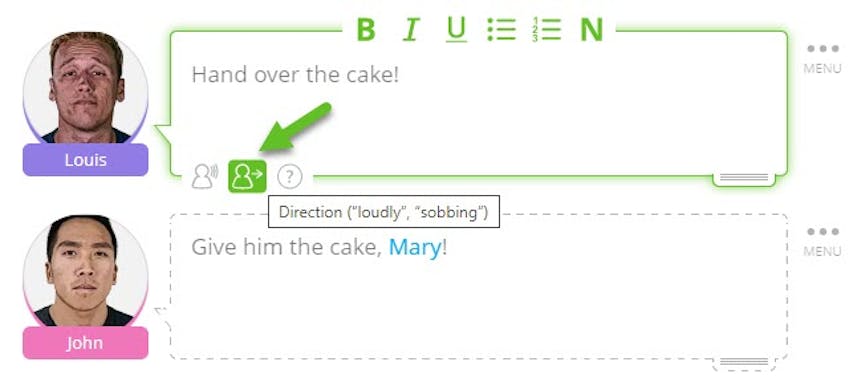
Then, add that this particular line is delivered “In French.”
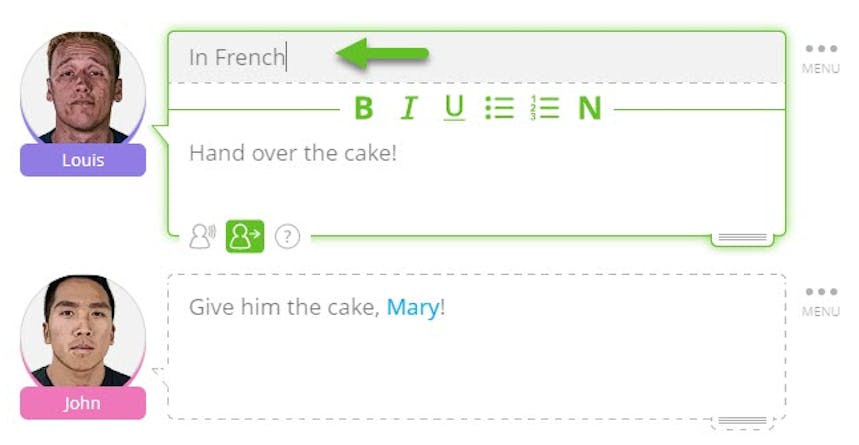
Click anywhere outside the Dialogue Stream item to finalize the change.

When you export your SoCreate story to the traditional screenplay format, it will look like this:
(in French)
Hand over the cake!
Give him the cake, Mary!
You can also use SoCreate’s Dialogue Type option and select Foreign Language. This is best used when the foreign language being spoken isn’t as important as what’s being said. Your script will denote that the line is delivered in a foreign language without specifying which foreign language it is.
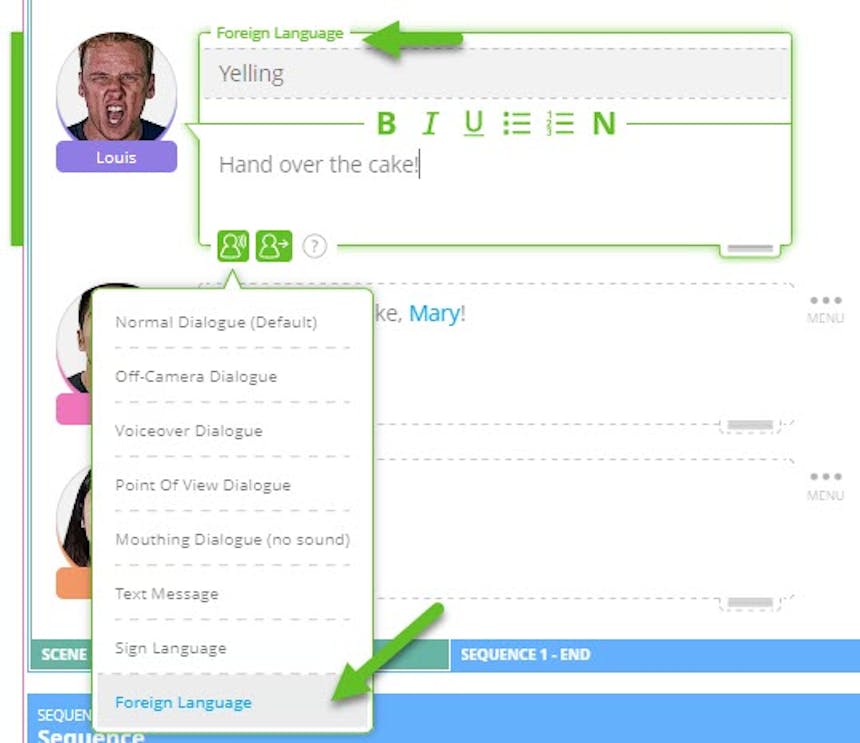
If you’re writing a scene that’s foreign language heavy, you may consider stating that in the scene description or when you introduce that new character. To insert scene description, use the Action Stream Item from your Tools Toolbar. Within the Action Stream Item, describe the scene. On a new line, add that “All dialogue is spoken in [insert foreign language here].” You can put this text in bold or write it in italics so it stands out from the description. For example:
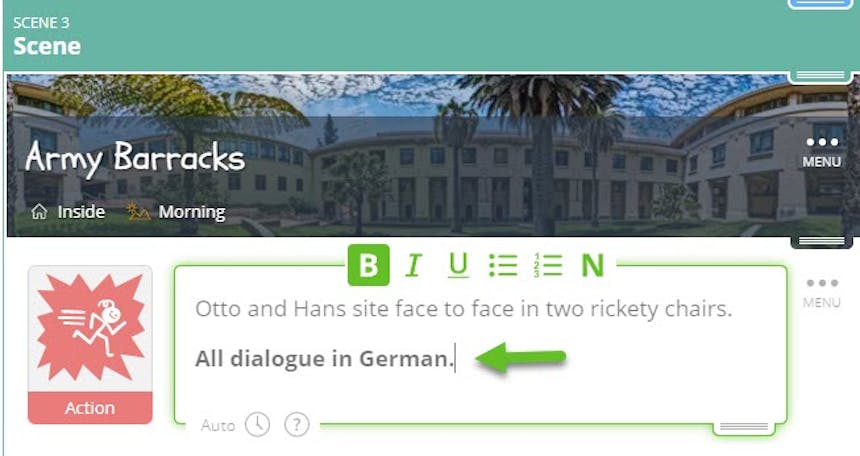
When you export your SoCreate story to the traditional screenplay format, it will look like this:
Otto and Hans site face to face in two rickety chairs.
All dialogue in German.
Subtitles would need to be added to the film after the fact.
If there’s a significant number of scenes in your screenplay that utilize foreign language writing, you should note near the beginning, in the description, that all dialogue spoken in that foreign language will be noted using italics from there forward. Or, that all dialogue spoken in a foreign language will be noted using brackets.
To insert this note within your scene description, use the Action Stream Item from your Tools Toolbar. Within the Action Stream Item, describe the scene. On a new line, add that “All dialogue in italics is spoken in [insert foreign language here].” Or, “All dialogue in brackets is spoken in [insert foreign language here].”
For example:

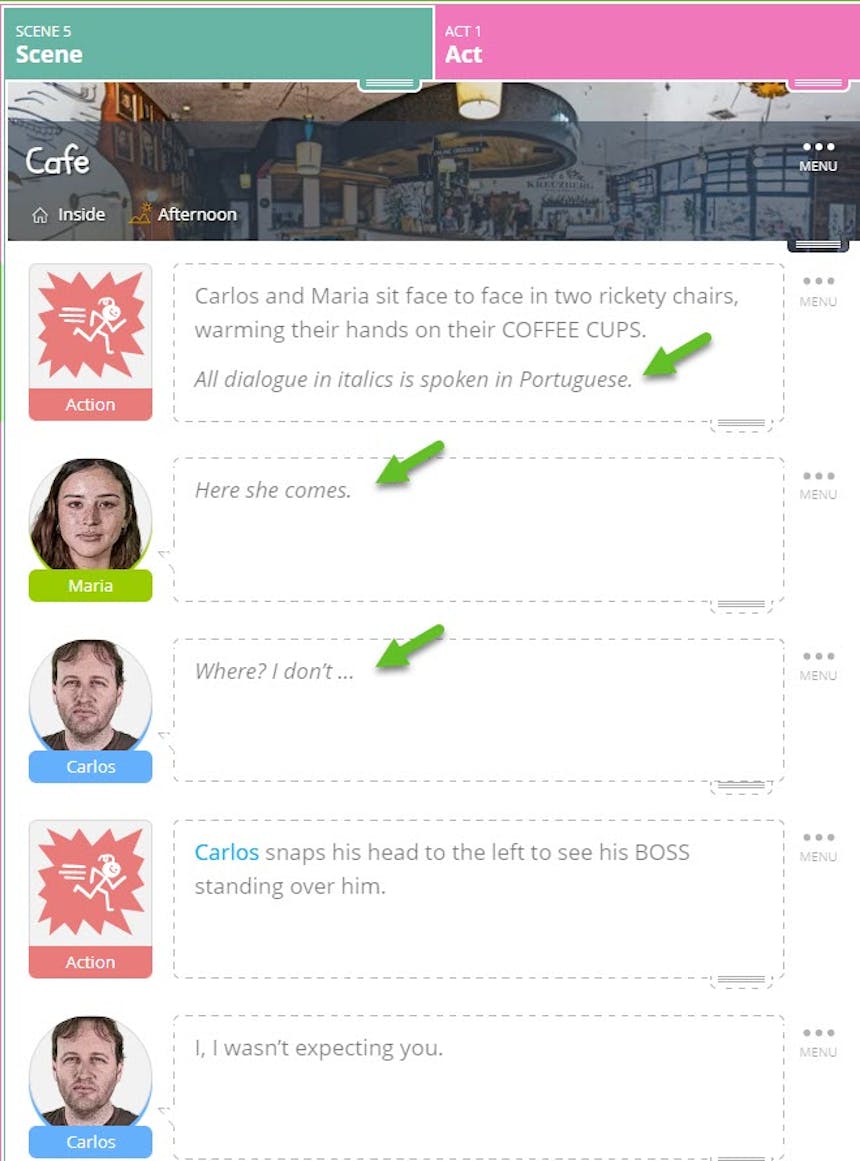
When you export your SoCreate story to the traditional screenplay format, it will look like this:
Carlos and Maria sit face to face in two rickety chairs, warming their hands on their COFFEE CUPS.
All dialogue in italics is spoken in Portuguese.
Here she comes.
Where? I don't ...
CARLOS snaps his head to the left to see his BOSS standing over him.
I, I wasn't expecting you.
The screenplay will flow better for the reader, without the constant interruption of parentheses to note a foreign language is being spoken.
David Trottier gives this example in The Screenwriter’s Bible for conveying that the sound of the foreign language is as important as what the character is saying, but the words have a humorous quality:
Zoo-BEE, Woo-BEE.
You're cute.
Voilà! It’s really that simple. Writing a foreign language in your screenplay will be even easier with the SoCreate Screenwriting Platform. Interested in giving it a try? Be sure to sign up for our private beta list to be one of the first to know when the platform launches soon.
Adios,